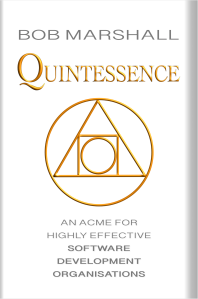Effective Software Development
Everyone in the software industry (managers excepted) knows the following is true, yet nobody wants to talk about it:
Effective software development is entirely incompatible with typical (hierarchical, command-and-control) management.
After 50 years in the industry, I’d go so far as to say:
Effective software development is entirely incompatible with ANY known form of management.
Corollary
Place managers in charge of software development and it can NEVER be ANYTHING but ineffective (high costs, low quality, poor due date performance, lack of innovation, etc.).
NB Applies more broadly, beyond the domain of software development, too.
Reasons
The reasons for this incompatibility can be explained as follows:
1. Creativity and innovation: Software development is a highly creative and innovative process that often requires developers to think out of the box, experiment, and come up with novel solutions. A hierarchical management structure stifles creativity and inhibits the free flow of ideas, emphasising, as it does, strict adherence to rules and policies.
2. Responsiveness and flexibility: In the rapidly changing world of technology, software development teams need to be responsive and adaptable in order to respond quickly to changes in requirements, market conditions, approaches, and user feedback. A command-and-control management style, which relies on rigid plans and mandated approaches, tools, makes it difficult to impossible for teams to pivot and adapt as needed.
3. Collaboration and communication: Effective software development relies on close collaboration and communication among team members with diverse skills and expertise. Hierarchical management structures create barriers to communication, with information flowing primarily up and down the chain of command, rather than freely among team members.
4. Autonomy and motivation: Software developers tend to be highly skilled, motivated individuals who thrive on autonomy and the ability to make decisions about their work. Command-and-control management undermines their motivation by imposing external control and limiting their decision-making authority.
The broader point being made in the corollary statement is that traditional hierarchical management is never the best fit for software development, and that organisations might choose to consider alternative organisational styles and structures that are more conducive to the unique demands of software development.
This idea can indeed apply beyond the domain of software development, as many industries are increasingly recognising the need for more responsive, collaborative, and flexible management approaches to drive innovation and adapt to rapidly changing environments.


